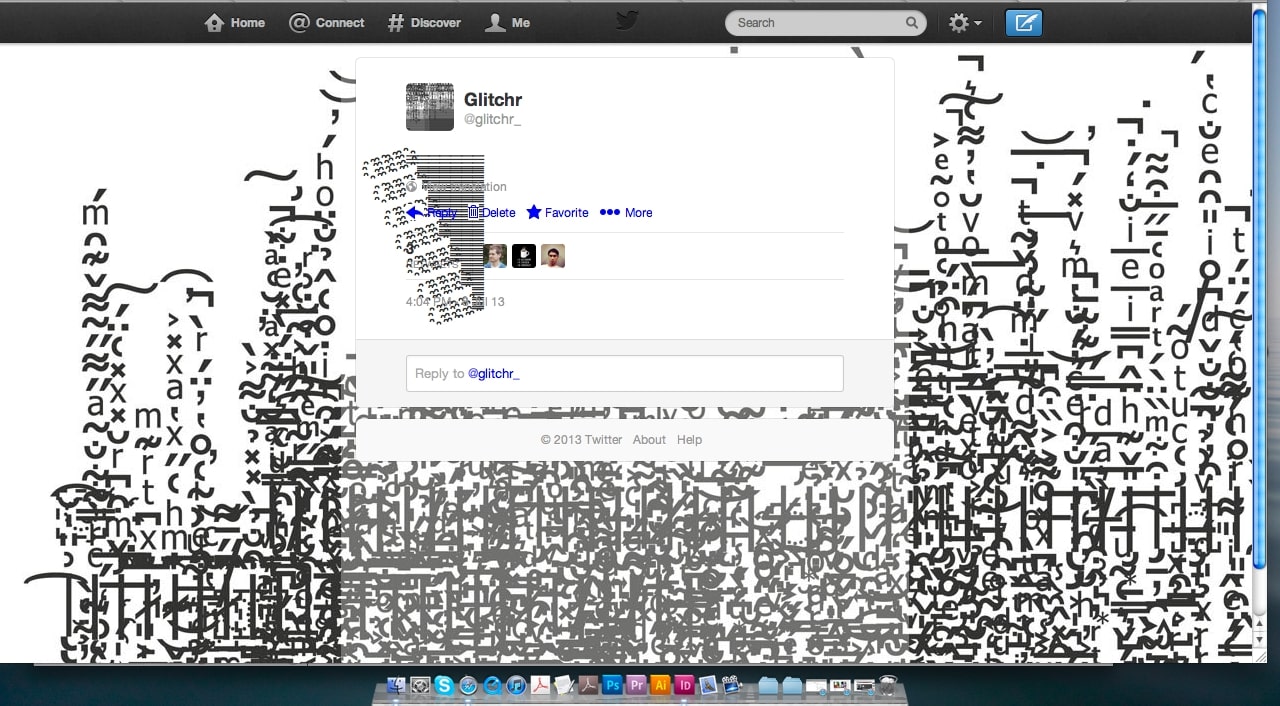The Toxic Brand of NFTs
Jeffrey Alan Scudder walks us through the reasons why people reject NFTs, such as intellectual property theft and energy consumption.
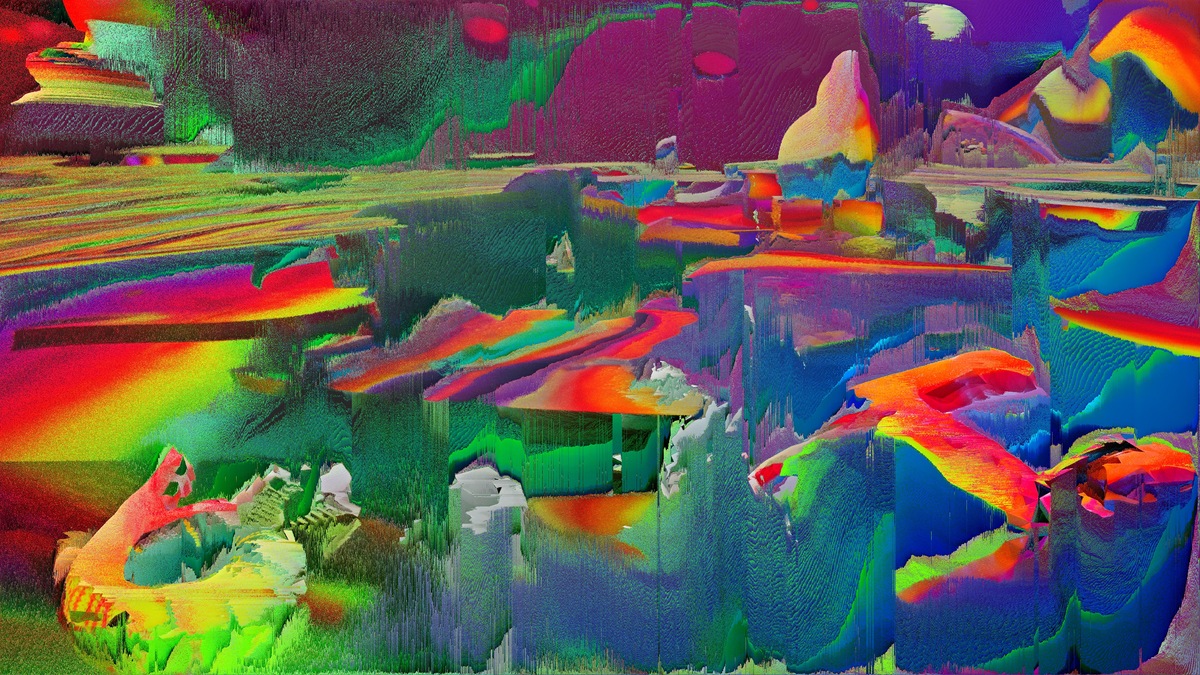
As Rosa Menkman writes in the introduction to Outland’s special issue on glitch art, “There are as many stories of glitch as there are practitioners and individuals experiencing or working with the glitch.” Each artist brings their own perspective—their background, their skills, their imagination—to bear on the work they carry out. It would be impossible to chart all their stories, but we can offer a sample. Below, four artists from around the world share the influential tools and inventive approaches that they have developed when working with glitch. Sky Goodman discusses the mixing of analog and digital glitches. Kim Asendorf explains how he created the now widely used algorithmic process known as “pixel sorting.” Antonio Roberts talks about the technique known as databending. And Laimonas Zakas relates the story of his project to “break” social media, Glitchr. (This is the first in a two-part series entitled “Lenses on Glitch.” Read part two here.)
Pixel sorting started for me with one line of code. On Processing, you can load an image directly into an array and add one line of code which sorts all the colors in the image, transforming it into a gradient. I was impressed by the simplicity of the idea, but there were already lots of projects exploring it. I also wanted to preserve something of the initial image that was more than just its colors. So in 2010 I wrote my own sorting algorithm—it was not a one-liner anymore, but it was still not very complex. The main thing I added was the use of a threshold value which meant you could say that every pixel below or above that value, depending on the definition, would be left untouched. The sorting only happens around those pixels. I also added a bit of code that sometimes altered the colors while sorting them.
It was exciting to see the aesthetics that emerged. There was a kind of wash effect that came pretty close to painting. The results, to me, also looked intentional rather than random—there was a balance and a harmony to the images. Obviously, for a lot of people, they also looked like glitch. I have a background with experimenting with glitch. But I always felt a bit lost because it’s so uncontrollable. With glitch, the portion of experiments that give you a really good result was always so low—at least with the tools I was using, like text editors and hex editors. So I took the aesthetic of glitch, or tried to replicate that aesthetic with code and automation, in a way that gave me more control. I felt like programming is maybe a better tool to make fake glitch. To me, it wasn’t real glitch because there was no malfunction in the process.
While I thought the code and the images it produced were quite beautiful, I didn’t want to make thousands of images with the code. But I had a lot of feedback that people were interested in the aesthetic. So about a year later, after I’d produced maybe one or two series of images with the code, I released it on Github. I’ve gained a lot from Processing and other open-source tools that are freely available, so I thought it was a nice idea to put it out. At the time, there was a big glitch art scene on Facebook. Thousands of people were posting on different groups every day. Suddenly pixel sorting took over this image stream, and then people started mixing it with other techniques and there were even mobile image apps that used the code. In the last two or three years, I’ve seen it used in advertisements on television. I think I saw it on Netflix. Sometimes, artists ask me if they can use the code for a gallery show and I always say, “Why not?” I want them to use it as a tool.
—As told to Gabrielle Schwarz.
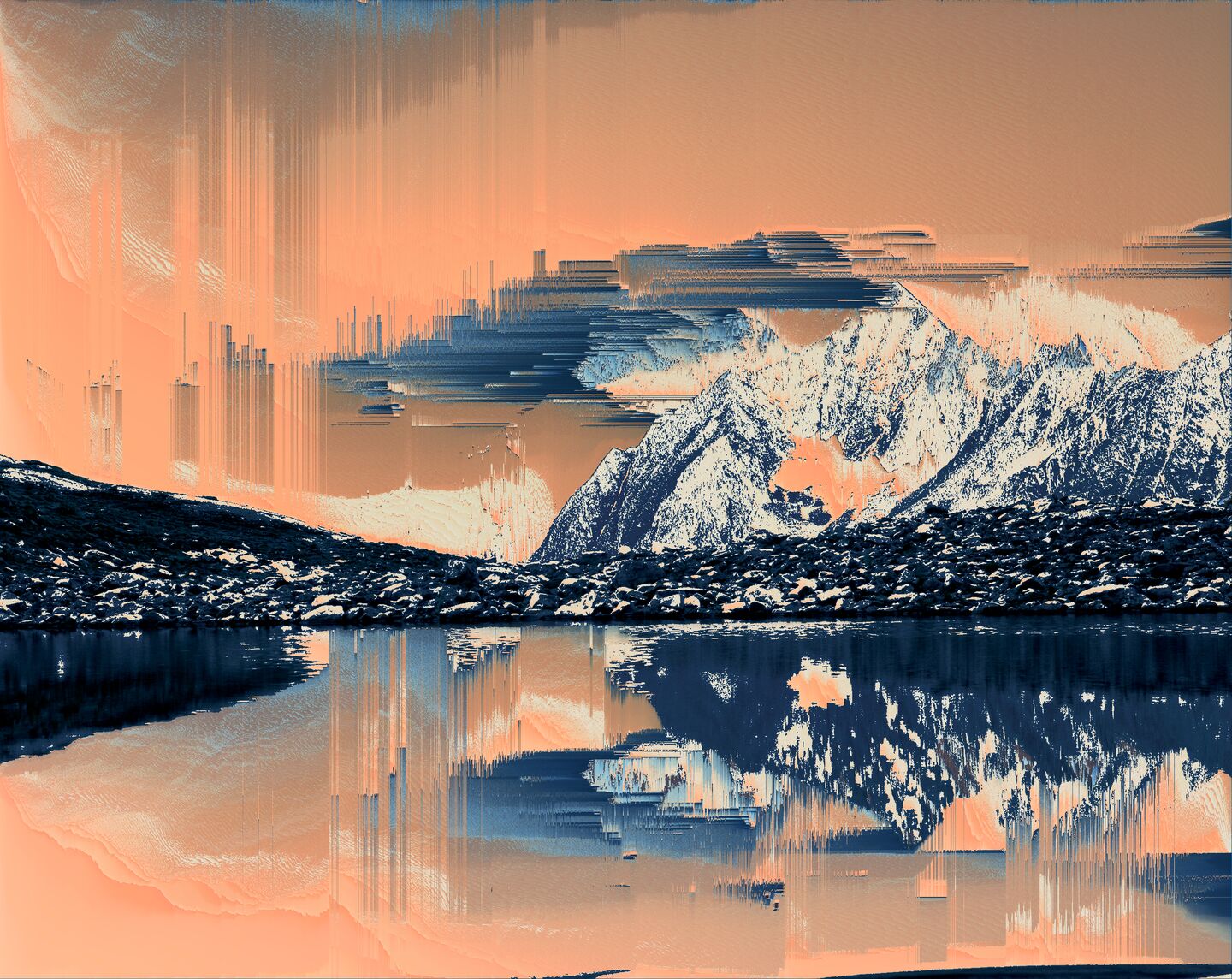
Before I got into glitch, I was mostly painting with watercolor and writing poetry—pretty traditional and analog. I never really considered myself a tech person. Then in 2014, I was watching the World Cup and my iMac glitched out and it took me down a rabbit hole of wanting to emulate the glitch that I saw. I started Googling and quickly discovered this massive thriving community of glitch artists. I met people in Chicago like Jon Cates and Nick Briz, and we started collaborating and being in shows and going to conferences together.
Coming from a painting and writing background, I’m a tactile person, so it makes sense that I became interested in hardware or analog glitches. I started to collect old televisions and video mixers and obsolete technology. It felt similar to painting, in a way: the way you have a direct correlation between, for instance, turning a button and getting a wash of color on a screen. I also enjoyed getting outputs and feeding them back in as an input, making these fun feedback loops.
From 2015 until 2020 I was mostly working with hardware to make analog video glitches. But then in 2020, when the pandemic happened, I got a VR headset so that I could hang out with my family in virtual spaces. We’re all in different places: my brother and his husband live in London, my parents were in New York City, and I was in Chicago. In VR, we’d play mini golf or go fishing. It was surprisingly meaningful. I also started to discover VR tools that you could use to sculpt and draw. They’re mostly for designers—there’s a program called Gravity Sketch which is for car designers and sneaker designers. But then artists find these tools and start to use and abuse for their own purposes.
Sculpting in Gravity Sketch, I realized I could make landscapes with trees and bodies of water—it was like what I used to do with watercolor painting, but now it had this amazing immersive 3D feeling. Then I discovered Blender, a free software for animating and 3D modeling. I realized I could map all the abstract video feedback footage I had—which had been accumulating on external hard drives for five years—onto any object in Blender. I started to map the videos onto water or mountains or trees or even alien creatures in these worlds. I also fell in love with the way that within Blender you can build the world and then use cameras to capture it from all angles, in moving or still images. You become videographer and photographer in your own metaverse.
I like working with obsolete technology because it feels like a kind of resistance to the rapid pace of development of technology today. But then I’m also using emergent technologies. I think through the act of creating these pieces I’m trying to work through my own love-hate relationship with where we are as a society with technology. So I’m trying to go backwards and preserve, while at the same time trying to accept what’s already here and the Pandora’s box that has been opened.
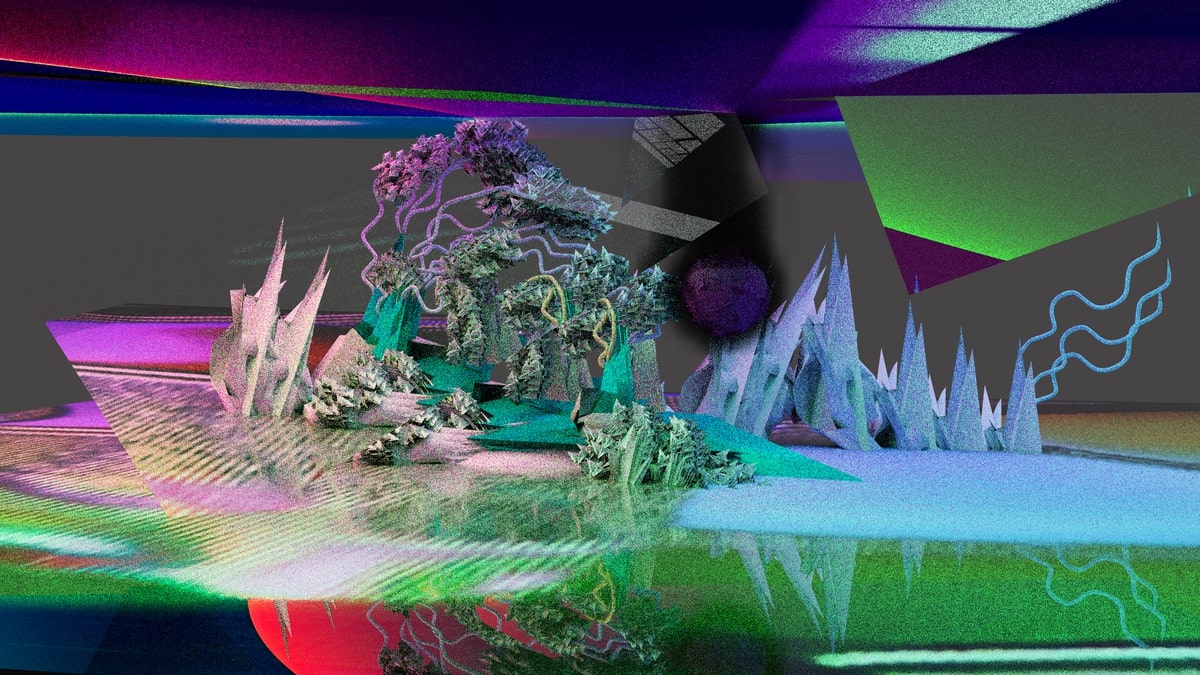
In around 2009 I was in the early stages of developing my digital art practice. To seek inspiration, I asked online for examples of artists and someone responded suggesting I check out glitch art and databending.
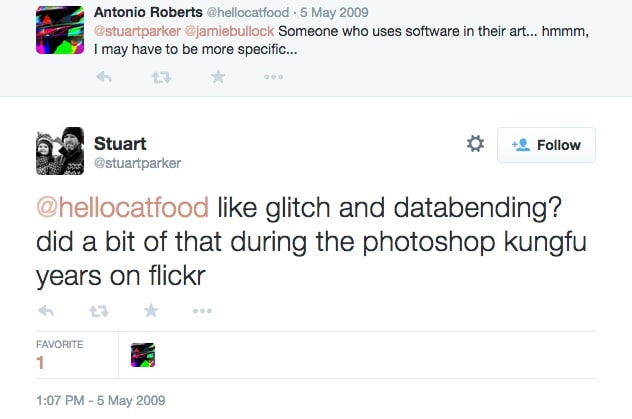
Databending, as I understood it back then, is the process of manipulating a source file (usually an image or video) in software not intended to manipulate it. This process will produce glitchy results but not to the point where the original file is unrecognizable—hence bending and not breaking. My first encounter with it was via a tutorial by stAllio which documented how to edit an image using the audio editor Adobe Audition (then called CoolEdit). But Audition was proprietary and in 2008 I’d made a decision to only use open-source software for my work. I started trying to work out how to databend using the free and open-source software Audacity, which is an audio editor similar in functionality to Adobe Audition.
This was surprisingly difficult. Usually when you encounter a software issue, you’re told to read the manual. But glitch artists are trying to learn how to misuse software, which no developer will tell you how to do. After initially asking for advice in a roundabout way, I eventually admitted my true intentions and a forum user helped me out. A week later my tutorial on databending using Audacity was published.
By publishing the tutorial I wanted to give budding glitch artists an option for databending that didn’t require proprietary software—but also to give something back to the glitch art community. In just a few months I had already met people online who were more than willing to share their knowledge and so I wanted to do the same. From the visitor and referral statistics on my website, I have seen the tutorial linked to from universities, galleries, and institutions across the world. I have also seen it rewritten, adapted into other tools, and made into video tutorials on Youtube. To this day it is the most viewed page on my website.
Now, even the Audacity developers have acknowledged the existence of databending. If my name eventually becomes detached from the tutorial, I’m still glad to have played a part in the trajectory of the development of glitch art. Today, the contemporary glitch scene seems like a healthy mixture of people creating tools and developing techniques, and those creating amazing artworks. There has been a broadening of what the term “glitch art” means, encompassing more aesthetic glitches as well as those produced as a result of breaking or bending software. However, I don’t think this is a bad thing. The scene has evolved and what constitutes glitch art will always be in flux and decided by those in the community itself. I’m just happy to see people engaging with it.
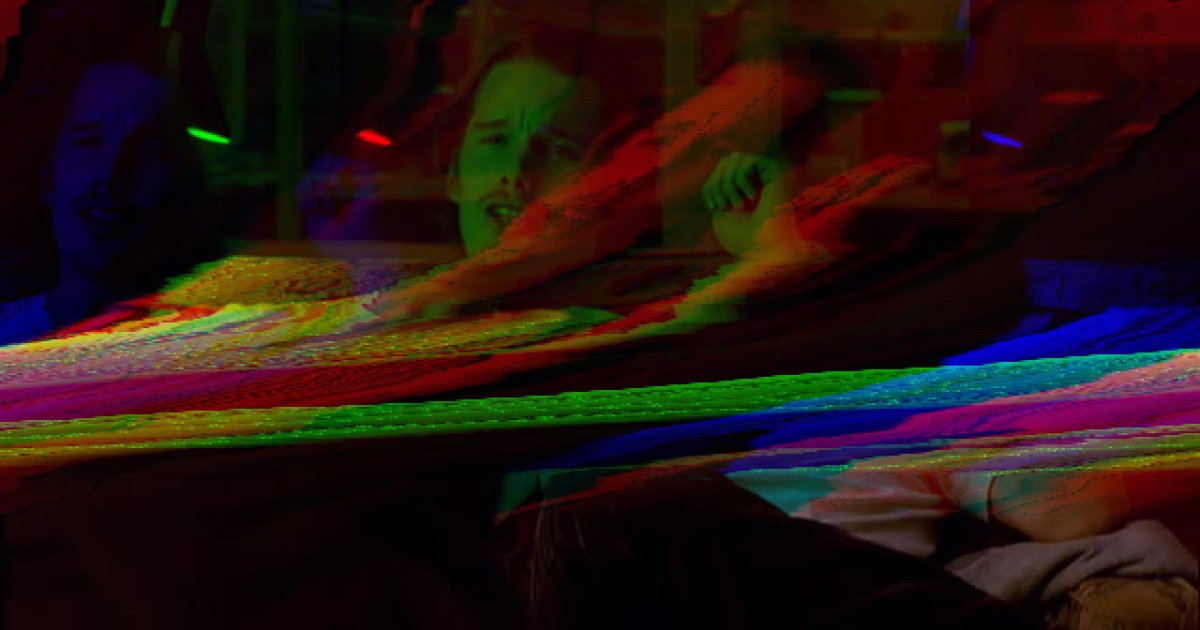
I come from a video art background. In the 2000s and ’10s I would frequently VJ in clubs and festivals. In the summer of 2010, at Satta Outside festival in the Lithuanian seaside, I encountered the work of a fellow VJ—Rosa Menkman, who had just published her Glitch Studies Manifesto earlier that year. The aesthetics of glitch were not as ubiquitous then as they are now, and it was fascinating to watch her glitchy visuals on the big screen.
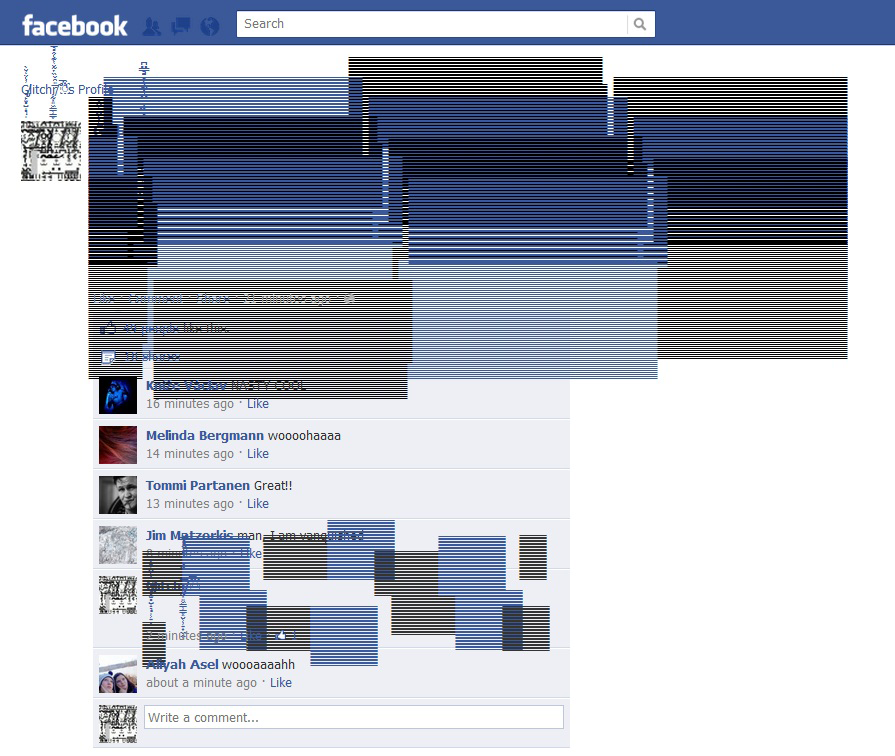
After the festival, I added Rosa on Facebook and through her posts discovered lots of groups of glitch artists sharing their experiments. I was inspired and started experimenting. In 2011 I decided to create my own Facebook page to share my stuff and named it Glitchr. Initially, my fascination revolved around pushing the boundaries of a strict Facebook layout. At first, I was posting “messed up” texts, manipulated by adding huge quantities of Unicode diacritics above and below certain characters (a practice more popularly known as Zalgo text).
As I delved deeper, I figured out ways to incorporate the site’s native graphical elements such as chat boxes, search bars, and captchas into my posts, and thus completely distort the entire feeds of my followers. This attracted the attention of Facebook developers including the designer Soleio Cuervo, inventor of the iconic “Like” feature, who posted that he would very much like to meet me. It triggered a wave of media attention and I got tens of thousands of new followers.
Around that time I also started posting glitchy stuff on Twitter, although the character count was a major constraint there. But on Facebook, most of the vulnerabilities that I was exploiting were quickly patched by the developers and the posts were becoming “empty”—usually within a few days after posting. So I was taking screenshots and screen captures; this documentation became the basis for various gallery shows I’ve done over the years.
Eventually, after Facebook improved its code to the extent that messing with it became virtually impossible, the Glitchr page became stagnant. In recent years multiple enterprises—none affiliated with me—have started operating under the name Glitchr, including a game development company, an indie social media platform, several photo effect apps, musicians, and even a crypto token.
I still create something glitchy once in a while and get excited when I spot a glitching screen somewhere, but I feel that glitch aesthetics lost its special charm when popular culture started widely using and abusing it. In the broader context of contemporary digital art, I’m worried about the trend of young individuals motivated to become artists primarily for financial gain. A decade ago, the motivation of most digital artists felt more creative and not primarily focused on marketability.
